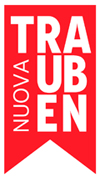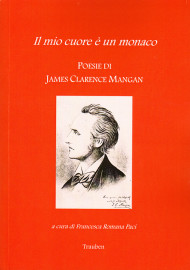
Thomas Stearns Eliot, Four Quartets / Quattro quartetti
9,00 €
| ISBN | 9788889909164 |
|---|---|
| Casa Editrice | Trauben |
| Anno | 2007 |
| Autore | a cura di Valerio Fissore con testo a fronte |
| Pagine | 74 |
Descrizione prodotto
Questa traduzione dei Four Quartets (1936-42) di T.S. Eliot realizzata e curata da Valerio Fissore, si avvale anche del lavoro svolto con gli studenti del corso universitario di “Traduzione poetica”.
“In the solitary final revision of the translation (which took a long time in coming to completition, and actually has not yet been completed, in spite of this printed evidence) I have incorporated many of their suggestions…”. Traduzione sempre in fieri che non smette mai di attualizzare il testo originale, ma che intende anche illustrare una teoria particolare della traduzione poetica.
“It is my belief that there should be one unified approach to translation, based on a linguistics of translation and an accosting the individual text rather than the generally approved approach today, which recommends sociolinguistic modes appropriate to the typology to which texts belong (semantic vs communicative, not to speak of finer segmentations) […] ;
While general translation concerns the conveyance of textual messages from context to context, literary translation is specifically translation of language forms, though, of course, not only of form; still a literary text would not bear any substantial difference from any other type of text if it were not for the role that form has in its making. What is generally understood as “translation of culture” may account for, and tolerates, semantic paraphrase. Translation of verse is first and foremost translation of linguistic form, which cannot be paraphrased unless by “corresponding” forms. […]
Of course the prosodic patterns of poetry depend much on the prosodic systems of languages, which cannot be duplicated (or at least whose duplication can often be looked on as artificial or, at best, as an indifferently clever exercise, and be possible and successful once in a thousand attempts). But if the line is a phonological unit with some significant relation to its content, then its rhythm must have (and I hold that it has) meaning, for which some synchronisation with the original will have to be looked for. The translated line as a phono-semantic unit must be in tune with the line that it is said to translate. Its first enunciation as poetry consists in meaning and sound; its target in translation must bear relevance to more than just semantic meaning. […]”
[…] il traduttore è un intermediario, un traghettatore, che deve essere apprezzato per il suo mestiere e non per la sua arte. Deve possedere una consapevolezza non solo delle lingue con le quali opera, ma anche delle lingue come lingua-linguaggio, per essere guidato nella definizione di una techné che gli permetta di esercitare al meglio il suo mestiere.
La qualità del lavoro fatto dipende insieme dalla teoria, che deve essere rigorosa ma non rigida (cioè una teoria che sa, quando è necessario, “falsificarsi”), e dalla sistematica applicazione della techné. Entrambe debbono garantire che il risultato del tradurre sia attendibille in una valutazione contrastiva continua con il testo di origine. Nella catena comunicativa, fonte-intermediazione-destinatario, la fedeltà del traduttore deve essere rivolta nelle due direzioni della fonte e della destinazione; verso la destinazione il traduttore ha responsabilità che riguardano esclusivamente il sistema linguistico condiviso, mentre con la fonte ha la responsabilità della qualità del discorso e del messaggio formulato da un autore.
Nell’atto traduttivo la teoria è il riferimento fermo sul quale verificare le possibilità dell’azione. L’azione, risultato della techné, è ondivaga, è soggetta a ritardi ed accelerazioni, sospensioni e contraddizioni. Non è mai possibile darne un resoconto se non nei termini succinti di un continuo pensare e ripensare a soluzioni di avvicinamento e accostamento all’intenzione del testo originale, che si realizzano in domande esplicitamente poste dal traduttore a se stesso o ai suoi interlocutori, alle sue fonti di informazione (le persone e le strumentazioni).
I Four Quartets di T.S. Eliot stanno qui di fronte ai Quattro quartetti di una versione italiana che vorrebbe potersi affermare essere ancora opera dello stesso autore originale”.
V.F.
Informazioni aggiuntive
| ISBN | 9788889909164 |
|---|---|
| Casa Editrice | Trauben |
| Anno | 2007 |
| Autore | a cura di Valerio Fissore con testo a fronte |
| Pagine | 74 |

